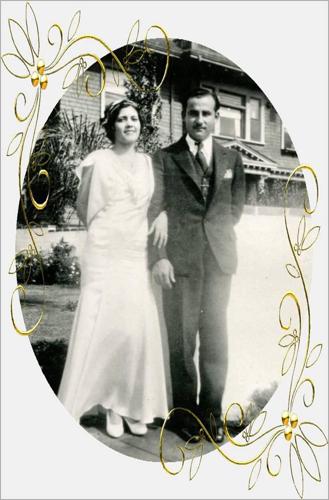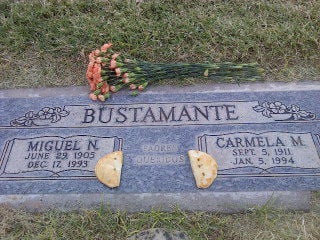A photo popped up on my Facebook memory page. In the photo, a young smiling woman is dressed in a lovely white wedding dress and matching shoes, and her beau is wearing a three-piece suit and tie.
They are my maternal grandparents on their wedding day in 1931 in Los Angeles, where they had met. On that same day, five days after my grandmother turned 20, my abuelitos motored east to Tucson to start their lives together.
Many Tucsonans moved here from somewhere else. Heck, since Tucson’s colonial days in the 18th century, most Tucsonans came from another place. They came for a better life. They came because of a job. They were passing by, stopped for a rest and a meal, and they never left. They came to serve in the military or to study at the University of Arizona and stayed. They came to escape an abusive relationship or society in another country.
Tucsonans have similar stories of how the Old Pueblo became their home, and several of them will tell their stories at the Tucson Storytellers event at the Tucson Museum of Art, 140 N. Main Ave., Wednesday, Sept. 26.
My grandparents, Carmela Macías Bustamante and Miguel Navarro Bustamante, both born in different parts of northern Mexico, came to Tucson because he had lived here for a couple of years before Los Angeles, and my great-grandparents, Miguel Monreal Bustamante and Carmen Navarro Bustamante, lived in Tucson.
My great-grandfather was an itinerant Methodist minister, believed to be Tucson’s first Spanish-speaking Methodist preacher, and lived in a parsonage in the Dunbar-Spring neighborhood, a building which still stands. It was my abuelitos’ first home when they arrived 87 years ago.
The day my grandparents arrived, it did not start off well for my grandmother, who left a large, close-knit family in Los Angeles. “She cried,” said my aunt Esther Carmela Bustamante, the youngest of three daughters. My grandmother grew up in a strong Catholic family, and she did not look forward to the prospect of living in a Methodist church, said my aunt. Their room in the rectory was “like a hole in the wall.”
But disappointment would have to wait. The Great Depression was full on and my grandfather needed to find a job. Eventually he became a plumber’s apprentice and by 1941 he established his own business fixing appliances, stoves and furnaces for restaurants and homes. My grandmother eventually worked as a seamstress at the old Jácome’s department store downtown on North Stone Avenue and also sewed “squaw” dresses from home for a Western wear store.
Along the way they had three daughters, Alva and my mother Julieta, who were born before World War II, and Esther, the wartime baby. My grandparents didn’t live in the parsonage long. They moved around several times: South Herbert Avenue, between East 18th and 17th streets in Armory Park; on East Ninth Street near the Shanty off of North Fourth Avenue; in a house now occupied by El Charro Café on North Court Avenue in the Presidio; in a second-floor apartment next to the Temple of Music and Art on South Scott Avenue; and their final home at 1228 E. 12th St. in the Miles Neighborhood.
“That neighborhood was just fabulous,” said Tía Esther, who was 7 years old when my grandparents moved the family in 1949 to a small two-bedroom home in a neighborhood full of children. In the ensuing years my grandparents established a close circle of good friends, many of whom came from Tucson’s long-standing Mexican-American families.
As immigrants and naturalized citizens, my grandparents were proud to be Americans. They assimilated. They learned English. My grandfather joined the South Tucson Lions, the Elks clubs and Club Latino. He played golf at the private El Rio Country Club (before it became a municipal facility in 1968), and my grandmother was a professional homemaker who sewed clothes for her daughters, created costumes for pageants at Safford Elementary School, and made outfits for my sister Carmen’s Barbie dolls.
But my grandparents retained their love for and pride of Mexico. They enjoyed listening to Mexican music and frequently spoke in Spanish, and my grandfather collected several volumes on the Mexican Revolution. They instilled in their girls a love of their Mexican heritage.
“I knew if God spoke a language, it would be Spanish,” said my Aunt Esther.
My grandparents would live to enjoy their 11 grandchildren and several great-grandchildren.
My abuelito died on Dec. 17, 1993, at the age of 88. My abuelita didn’t stay a widow long; she died 19 days later on Jan. 5, 1994. She was 82. They are buried side-by-side at Hope Hope Cemetery.
They grew to love Tucson. They reflected Tucson’s history, its Mexican-American experience and embraced Tucson as if they had been born here.





